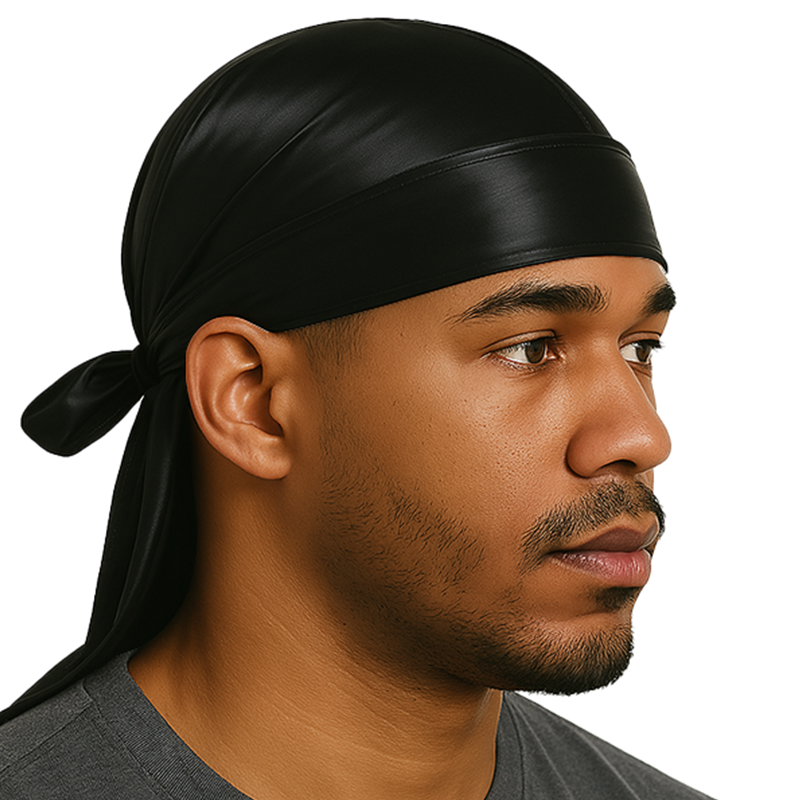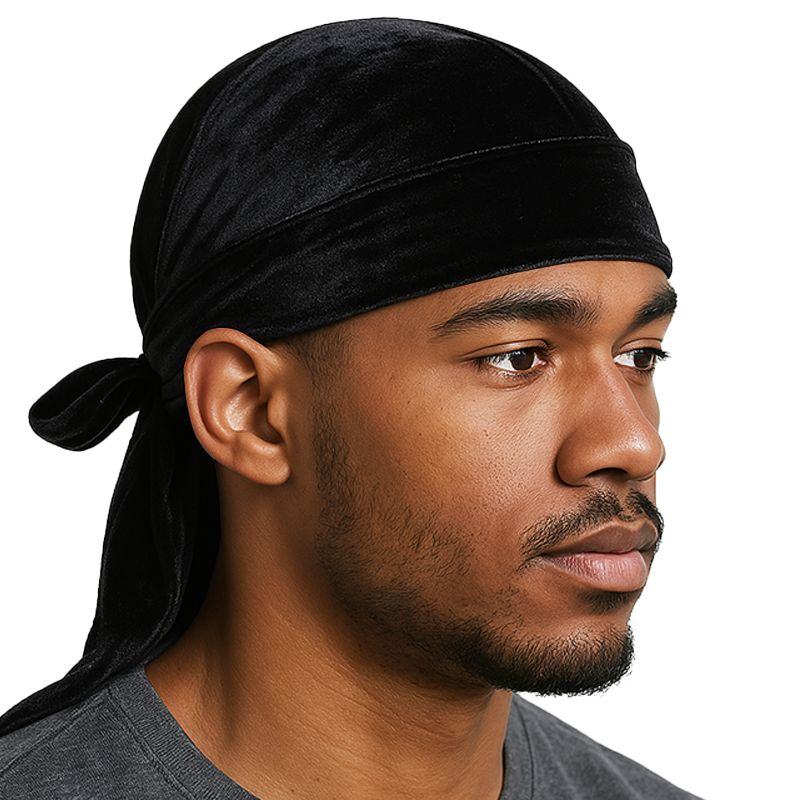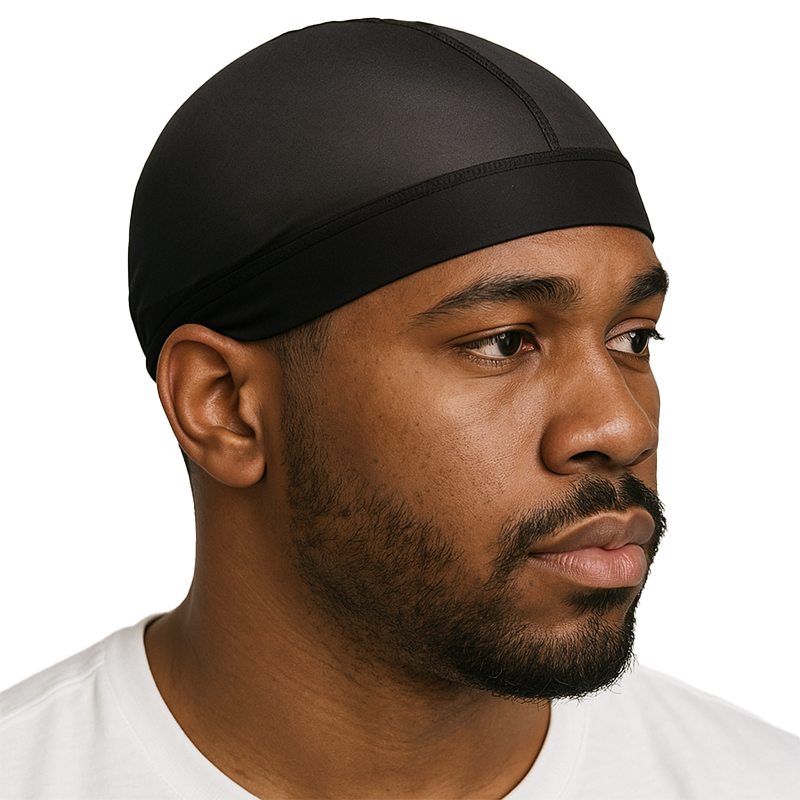When it comes to wearing a durag, one of the most common questions is how long should it be worn for? While the answer may seem straightforward, there are a number of factors that can influence the optimal duration for wearing a durag. In this article, we will explore the basics of durag use, including the purpose of wearing a durag, guidelines for safe use, and factors that can impact the length of time it should be worn.
The primary purpose of wearing a durag is to maintain and protect hairstyles, particularly those that are popular among Black men and women. By keeping hair in place and preventing it from becoming frizzy or damaged, a durag can help to extend the life of a hairstyle and reduce the need for frequent touch-ups. However, it is important to use a durag safely and appropriately in order to avoid potential risks and complications. In the following sections, we will provide some basic guidelines for durag use and explore the optimal duration for wearing a durag based on a variety of factors.
Key Takeaways
- Durags are primarily used to maintain and protect hairstyles, particularly among Black men and women.
- Safe and appropriate durag use is essential for avoiding potential risks and complications.
- The optimal duration for wearing a durag can vary based on a variety of factors, including time of day, activity level, and hair type.
Purpose of Wearing a Durag
A durag is a type of headwear that is commonly worn by people of African descent. It is typically made of a stretchy material that is designed to fit snugly around the head and keep the hair in place. The purpose of wearing a durag can vary depending on the individual, but there are a few common reasons why people wear them.
Hair Protection
One of the main reasons why people wear durags is to protect their hair. The material of the durag helps to keep the hair in place and prevent it from getting tangled or damaged. This is especially important for people who have long hair or who wear braids or other styles that require a lot of maintenance.
Style
Durags have also become a popular fashion accessory in recent years. Many people wear them as a way to add some flair to their outfit or to show off their personal style. Durags come in a variety of colours and patterns, so there is something for everyone.
Waves
Another reason why people wear durags is to create waves in their hair. This is achieved by brushing the hair in a specific pattern while wearing the durag. Over time, the hair will start to take on the desired wave pattern. This is a popular look among men, but some women also wear durags to create waves in their hair.
Overall, wearing a durag can serve a variety of purposes, from protecting the hair to making a fashion statement. It is a versatile accessory that has become an important part of many people's daily routines.
Basic Guidelines for Durag Use
When it comes to wearing a durag, there are some basic guidelines that one should follow to ensure maximum effectiveness. Here are some tips to keep in mind:
-
Wear it for the right amount of time: It is recommended to wear a durag for 30 minutes to an hour each day. Wearing it for longer periods can cause hair breakage and damage.
-
Choose the right material: Durags come in a variety of materials, including silk, velvet, and polyester. It is important to choose a material that is soft and breathable to avoid irritation and discomfort.
-
Adjust it properly: A durag should fit snugly but not too tightly. It should cover the hairline and ears, but not the forehead or eyebrows. Adjust it as needed to ensure a comfortable fit.
-
Keep it clean: Regularly wash your durag to prevent buildup of oils, sweat, and dirt. A dirty durag can cause skin irritation and breakouts.
By following these basic guidelines, one can enjoy the benefits of wearing a durag without causing any harm to their hair or skin.
Optimal Durag Wearing Duration
When it comes to wearing a durag, the duration of time it should be left on depends on the purpose of the wearer. Here are the optimal durations for different purposes:
For Hair Waves
Wearing a durag is a crucial step in achieving and maintaining hair waves. To get the best results, it is recommended to wear a durag for at least 30 minutes to an hour after brushing your hair with pomade or wave cream. This allows the hair to set in the desired wave pattern. For those who are trying to establish a new wave pattern, it is recommended to wear a durag for longer periods, around 2-3 hours, to train the hair to lay down in the desired pattern.
For Hair Protection
Durags can also be used to protect hair from damage caused by external factors such as wind, sun, and dust. For this purpose, it is recommended to wear a durag for as long as the hair is exposed to these factors. For example, if spending a day at the beach, it is advisable to wear a durag for the entire duration of the visit to protect the hair from the sun and saltwater.
For Hair Compression
Some people wear durags to compress their hair, especially if they have long or thick hair. This can be done for various reasons, such as for a sleeker look or to keep the hair in place during physical activities. For hair compression, it is recommended to wear a durag for no longer than 2-3 hours at a time to avoid damaging the hair and scalp.
In conclusion, the optimal duration of wearing a durag depends on the purpose of the wearer. It is essential to keep in mind that leaving a durag on for too long can cause damage to the hair and scalp, so it is best to follow the recommended durations mentioned above.
Factors Influencing Durag Wearing Time
Durags are a popular headwear accessory worn by many individuals. However, the length of time one should leave a durag on varies depending on several factors. Here are some factors that influence durag wearing time:
Hair Type
Hair type plays a significant role in determining how long an individual should wear a durag. People with coarse or curly hair usually leave their durags on for longer periods. This is because their hair tends to lose moisture quickly, and the durag helps retain it. On the other hand, people with fine or straight hair may not need to wear a durag for an extended period as their hair retains moisture better.
Personal Comfort
Personal comfort is another factor that determines how long an individual should wear a durag. Some people may find it uncomfortable to wear a durag for an extended period, while others may not. It is essential to listen to your body and take off the durag if it becomes uncomfortable.
Intended Purpose
The intended purpose of wearing a durag can also influence how long an individual should wear it. For instance, if someone is wearing a durag to maintain waves or curls, they may need to wear it for an extended period. However, if the purpose of wearing a durag is to protect the hair from the sun or wind, a shorter wearing time may be sufficient.
In conclusion, the length of time one should wear a durag depends on several factors such as hair type, personal comfort, and intended purpose. It is essential to consider these factors when deciding how long to wear a durag to achieve the desired results.
Nighttime Durag Use
When it comes to wearing a durag at night, the general rule of thumb is to keep it on for 6-8 hours. This allows for the durag to properly compress the hair and help maintain any desired style. However, it's important to note that leaving a durag on for too long can lead to scalp irritation or even hair loss.
To ensure maximum comfort and effectiveness, it's recommended to use a satin or silk durag for nighttime use. These materials are gentle on the hair and help prevent friction, which can cause breakage and damage.
In addition to wearing a durag, it's also important to properly care for the hair before bed. This includes detangling, moisturizing, and protecting the hair with a satin or silk bonnet or pillowcase.
Overall, wearing a durag at night can be beneficial for maintaining hairstyles and promoting healthy hair. Just be sure to follow the recommended time frame and use appropriate materials for maximum effectiveness.
Daytime Durag Use
When it comes to daytime durag use, it's important to consider the type of durag material and the level of compression. Durags made from silk or satin are great for daytime use as they are breathable and won't cause excessive sweating. Cotton durags, on the other hand, are not recommended for daytime use as they can cause excess sweating and discomfort.
It's recommended to wear a durag with a medium level of compression during the day. This will help to keep the hair in place without causing too much tension on the scalp. It's important not to wear a durag too tightly during the day as this can lead to headaches and discomfort.
In addition to choosing the right type of durag and compression level, it's important to consider the duration of wear. It's recommended to wear a durag for no more than 6-8 hours during the day. This will give the hair enough time to set and lay down, without causing any damage or discomfort to the scalp.
Overall, daytime durag use can be a great way to maintain a neat and tidy hairstyle. By choosing the right type of durag and compression level, and limiting the duration of wear, individuals can enjoy the benefits of a durag without any negative side effects.
Durag Use During Exercise
Durags are commonly used during exercise to keep hair in place and prevent sweat from dripping into the eyes. However, it is important to use them correctly to avoid discomfort or irritation.
When wearing a durag during exercise, it is recommended to tie it snugly but not too tight. This will help keep hair in place without causing discomfort or restricting blood flow. It is also important to choose a durag made of breathable material, such as cotton, to allow for proper ventilation and prevent overheating.
Some people may prefer to wear a sweatband or headband in addition to a durag during exercise. This can help absorb sweat and prevent it from dripping down the face or neck. However, it is important to avoid wearing multiple layers that may cause overheating or discomfort.
Overall, durags can be a useful tool for maintaining hair during exercise. By following proper usage guidelines and choosing the right materials, individuals can comfortably wear a durag while working out.
Potential Risks of Prolonged Durag Wear
Wearing a durag for an extended period of time can lead to various potential risks and health concerns. Here are some of the most common risks associated with prolonged durag wear:
1. Scalp Irritation
Wearing a durag for too long can cause irritation and inflammation on the scalp. This is due to the tightness of the fabric and the lack of air circulation on the scalp. The irritation can cause itching, flaking, and even hair loss in severe cases.
2. Acne Breakouts
Wearing a durag for an extended period can also cause acne breakouts on the forehead and temples. The tight fabric can trap sweat, oil, and bacteria on the skin, leading to clogged pores and acne.
3. Headaches
Tight durags can put pressure on the scalp and cause headaches, especially if worn for a long time. This is because the durag can restrict blood flow to the scalp and cause tension headaches.
4. Hair Damage
Prolonged durag wear can also cause hair damage, especially if the durag is too tight or made of rough fabric. The friction between the hair and the durag can cause breakage and split ends, leading to hair damage and loss.
To avoid these potential risks, it is recommended to wear a durag for no longer than 8 hours a day and to choose a durag made of soft and breathable fabric. It is also important to wash the durag regularly to prevent the accumulation of sweat, oil, and bacteria.
Tips for Safe Durag Use
When using a durag, it is important to take precautions to ensure safe and effective use. Here are some tips to keep in mind:
1. Choose the Right Material
Durags can be made from a variety of materials, including silk, polyester, and nylon. It is important to choose a material that is comfortable and breathable, as well as durable. Silk durags are often preferred for their smooth texture and ability to prevent hair breakage.
2. Avoid Wearing Durags for Extended Periods
While durags can be worn for extended periods of time, it is important to take breaks to allow the scalp to breathe. Prolonged wear can cause skin irritation and even lead to hair loss.
3. Keep Durags Clean
Durags should be washed regularly to prevent the buildup of dirt, oil, and bacteria. It is recommended to wash durags by hand with mild soap and warm water, and to air dry them.
4. Adjust Durag Tension
The tension of a durag can affect how well it stays in place and how comfortable it is to wear. It is important to adjust the tension to a comfortable level, without being too tight or too loose.
5. Use a Brush or Comb
Using a brush or comb to smooth down the hair before putting on a durag can help to prevent tangles and ensure a more comfortable fit. It is also recommended to use a brush or comb to style the hair after removing the durag.
By following these tips, individuals can safely and effectively use durags to protect their hair and maintain their style.
Alternatives to Durag Use
For those who prefer not to use a durag, there are a few alternatives to consider. These alternatives can provide similar benefits to a durag without the need to wear a head covering.
Wave Cap
A wave cap is a small, tight-fitting cap that is worn to help create waves in the hair. It is made of a stretchy material that conforms to the shape of the head and can be worn for extended periods of time. The wave cap helps to compress the hair and keep it in place, which can help to create and maintain waves.














